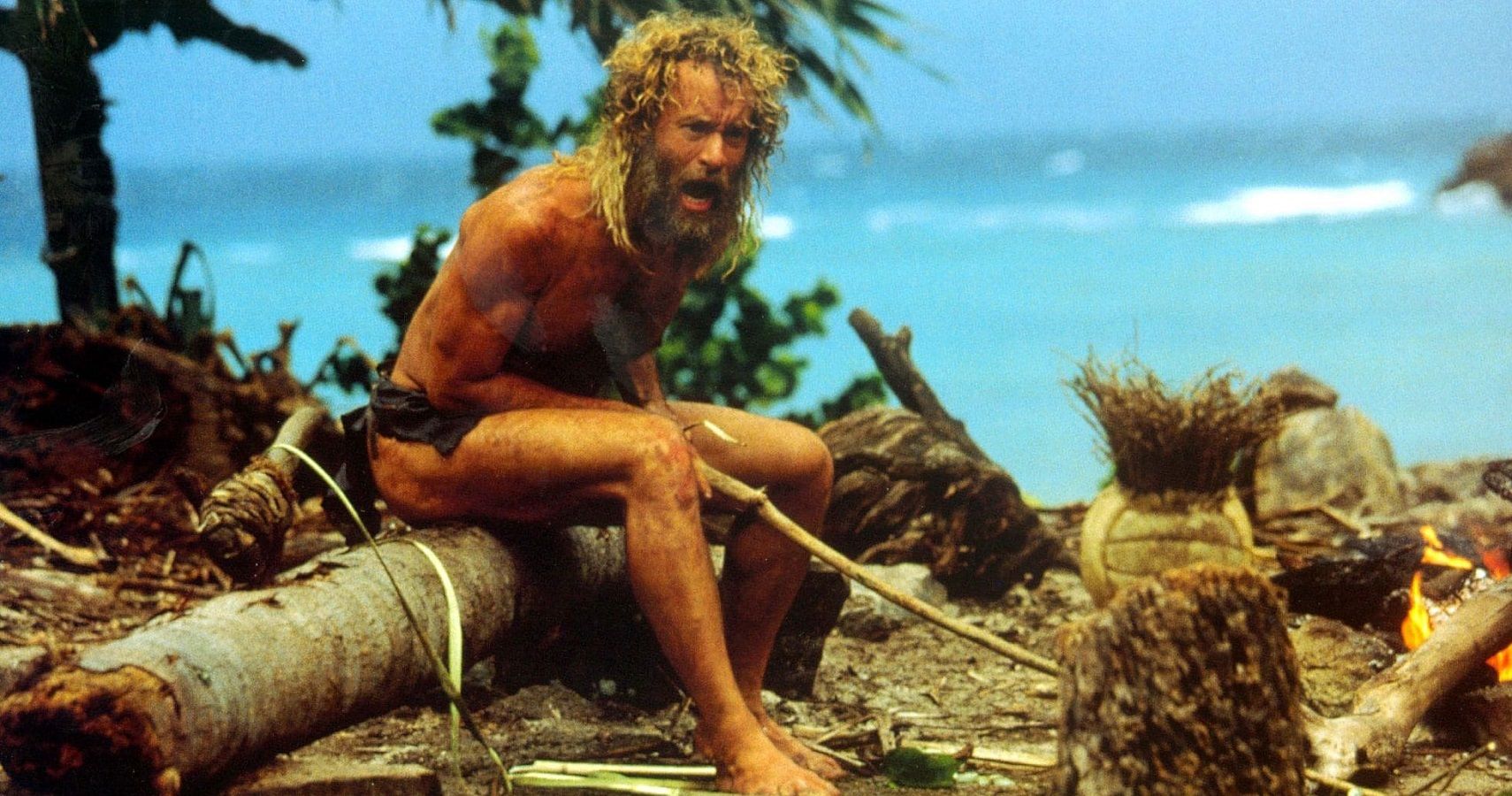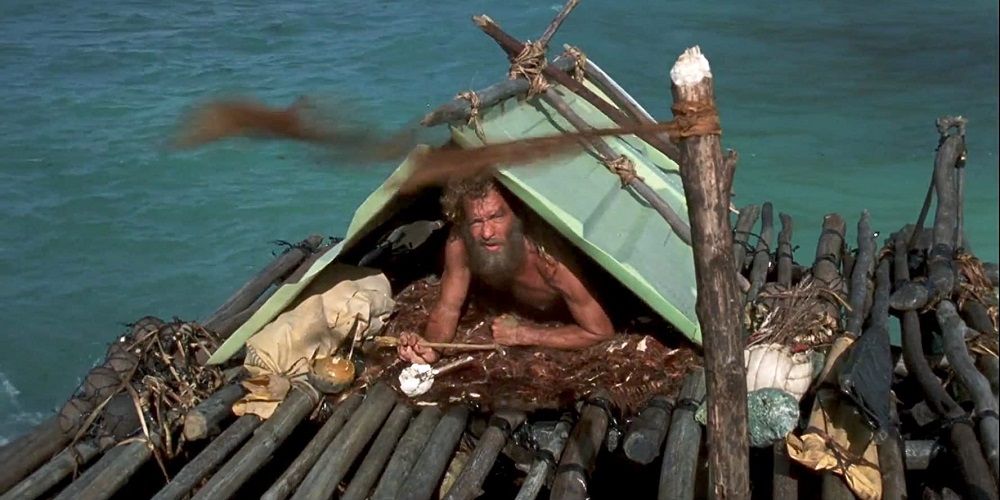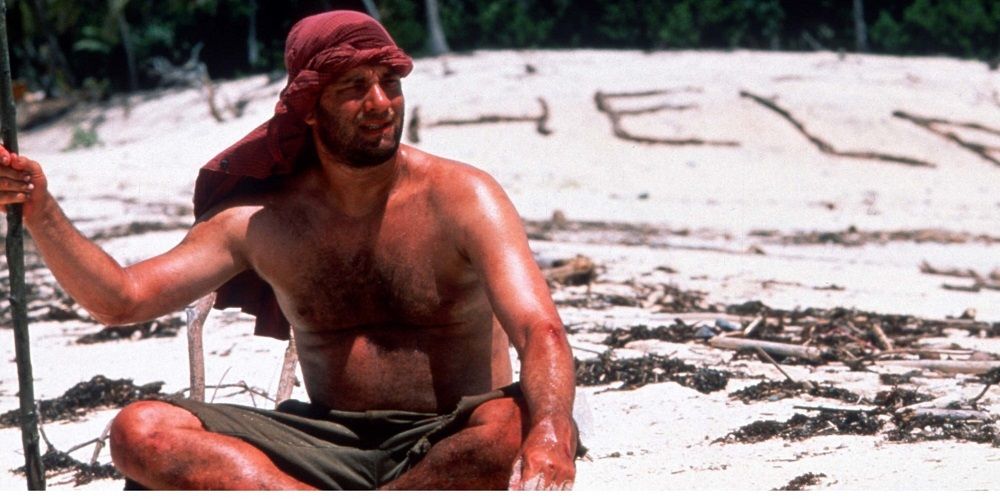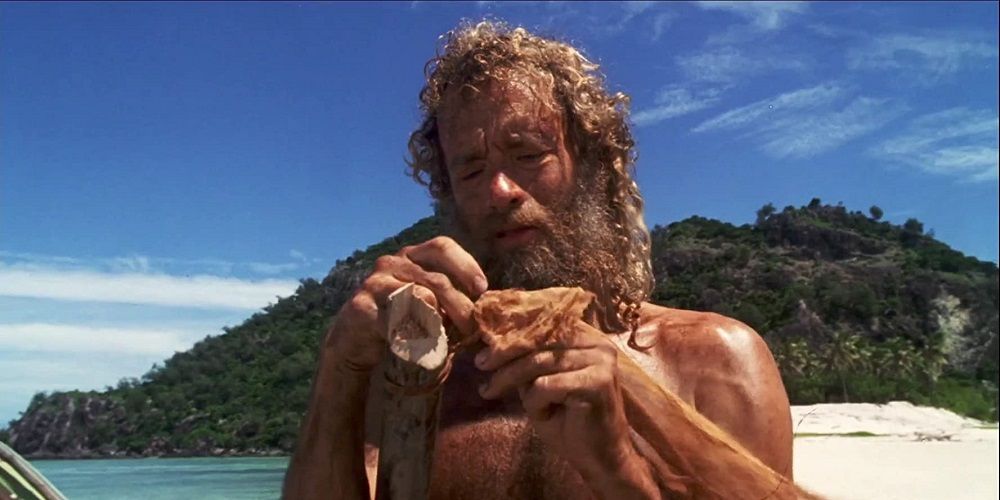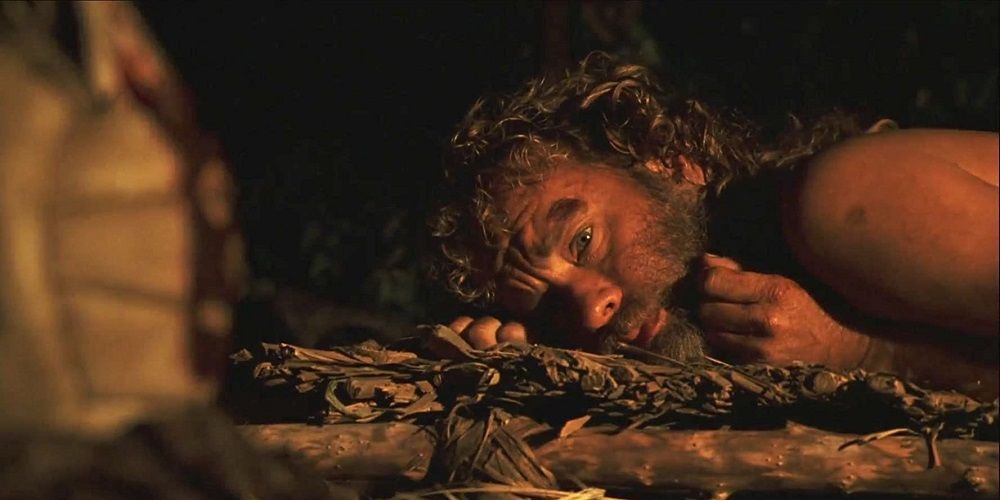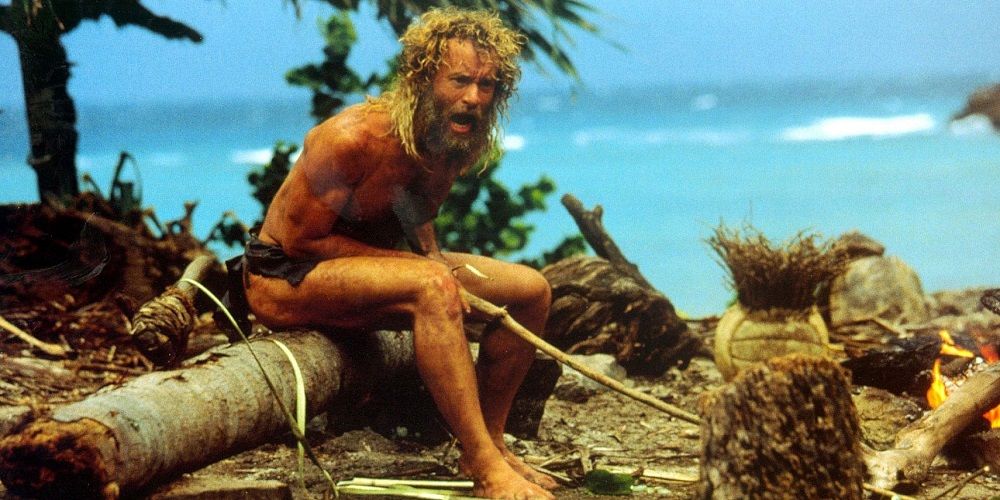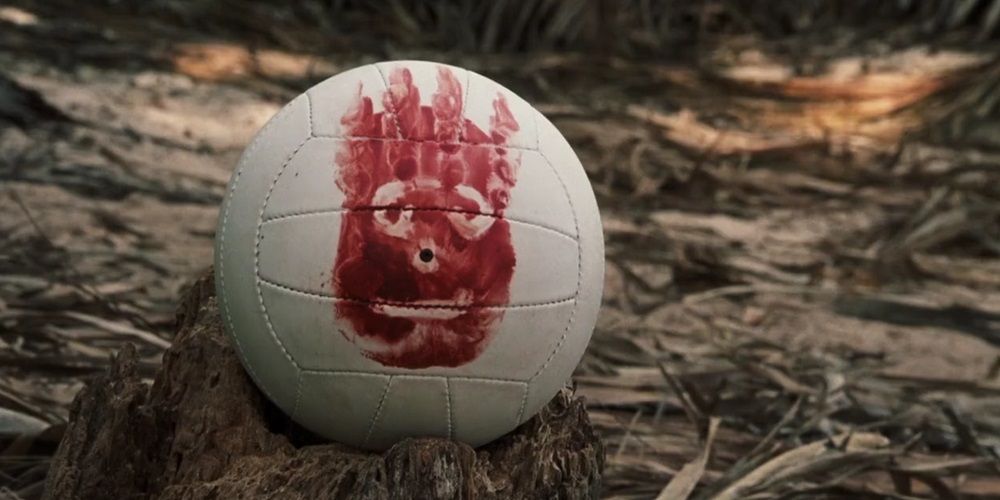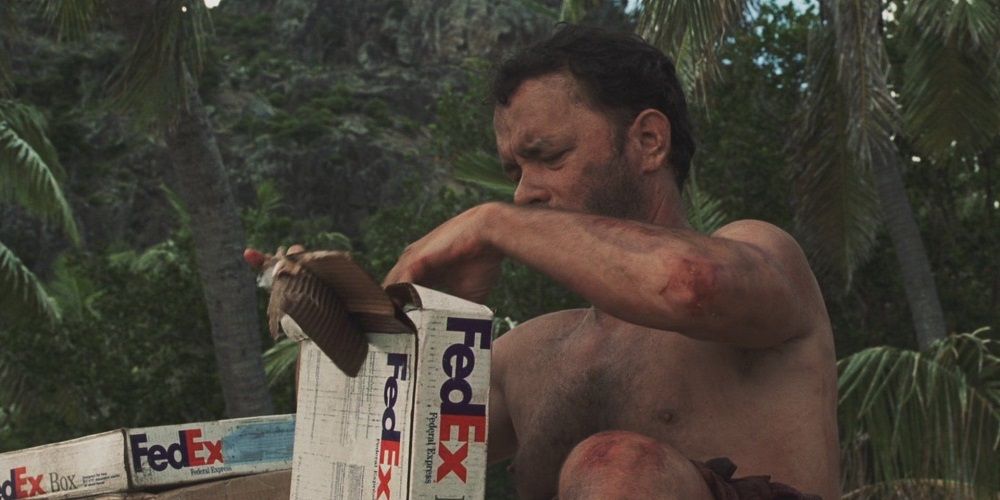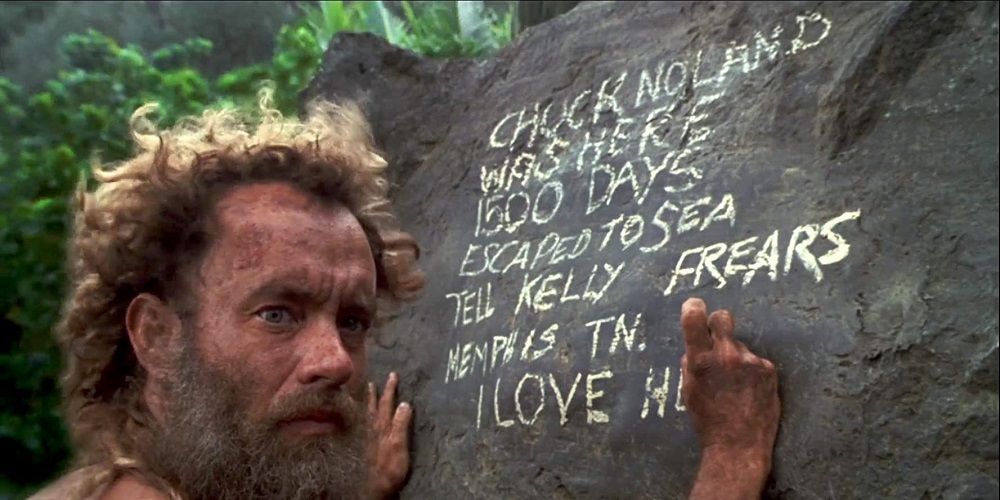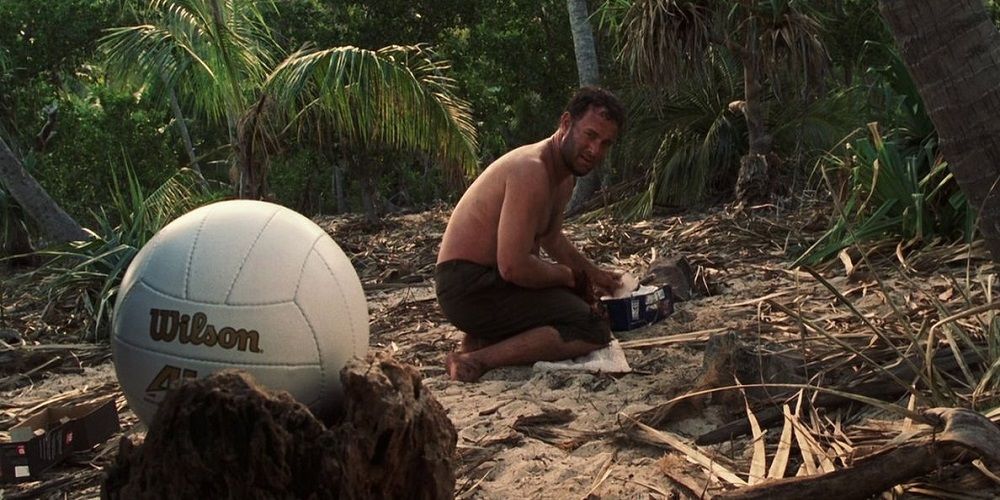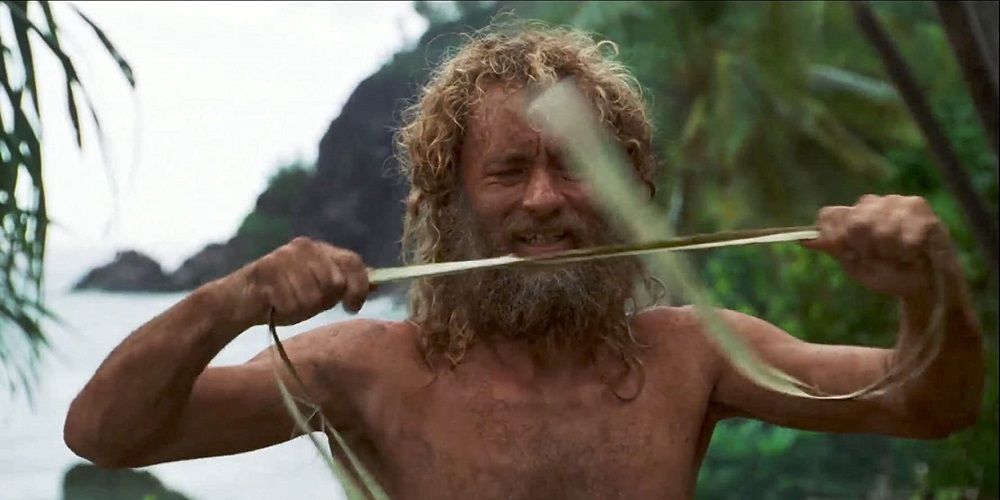Believe it or not, Robert Zemeckis' Cast Away turns 20 years old this calendar year. The harrowing adventure tale of unthinkable survival stars Tom Hanks in his last Oscar-nominated performance of the past two decades, a streak that ended with A Beautiful Day in the Neighborhood last year.
Cast Away charts the incredible story of FedEx executive Chuck Noland (Hanks), who miraculously survives a plane crash over the Pacific Ocean. Left to his own devices to subsist and survive off the land, Chuck makes a daring sojourn back to the mainland years later. As you can imagine, a lot went down during the making of the film. Here are 10 behind-the-scenes facts about Cast Away!
Inspiration
While Cast Away was scripted by writer William Broyles Jr., the premise of the film came from star Tom Hanks. In particular, Hanks was interested in exploring the idea of what would happen if a Boeing 747 full of mail packages went down in the Pacific Ocean.
Hanks then paired the idea with his desire to refashion the desert island subgenre and make it more realistic than the popular Gilligan's Island and Robinson Crusoe. Hanks chose to focus on the lack of food, water, shelter, fire, and friendship.
Hanks' Preparation
Hanks underwent a grueling physical transformation over the course of making Cast Away. Filming began in 1998 after Hanks gained 50 pounds to play the "healthier" version of Chuck. Production was then halted for an entire year while Hanks lost the weight to appear as physically gaunt as possible.
In terms of his preparation for the weight gain, Hanks simply did not exercise. After he lost the weight and grew out his hair, production was postponed for another four months so that Hanks could regain the weight and film the final scenes in the movie. During the hiatus, Zemeckis used the same crew to make the horror flick What Lies Beneath.
Crew Solidarity
To accurately film the difficulties of living on a desert island, several Cast Away crew members were subjected to the harsh living environment Chuck endures through most of the movie. Talk about solidarity!
In specific, some crew members were left on the island for a few days to learn survival skills that could be used for Chuck's character. Such tasks included catching fish, igniting a fire, cracking a coconut, retrieving lost packages from the surf, and yes, talking to a volleyball!
Day For Night
Robert Zemeckis has always been at the forefront of cinematic technology (Roger Rabbit, anyone?). But seriously, how many of you knew that the nighttime scenes featured in Cast Away were actually shot during the daytime?
True talk. Zemeckis went Day for Night, the industry parlance for filming nighttime scenes in the daylight hours. Nearly every single nighttime scene in Cast Away was achieved through digital means in post-production. The only exception includes the scene in which Chuck successfully makes fire.
Sound FX
For all intents and purposes, Cast Away is largely a dialogue-free silent film. Incredibly, all the sounds captured while on the island (including dialogue) had to be replaced in post-production after crashing waves proved too noisy to record on the spot. All told, nearly 90 minutes of sound was recreated in the editing room!
Even more shocking is how the film went on to earn an Oscar nomination for Best Sound at the 73rd Academy Awards. Hanks was also nominated for his performance, although neither won the gold statuette.
Wilson
Chuck's reversal of fortune is largely due to his pivotal relationship with a volleyball he refers to as Wilson (the brand name), the face of which Chuck draws from his own blood. While Wilson doesn't speak, a certain method was used to help Hanks interact with the ball.
Believe it or not, actual lines of dialogue were written for Wilson the volleyball. This was done to assist Hanks in forming a natural bond with an inanimate object. In 2020, as Hanks and wife Rita Wilson self-quarantined in the wake of a COVID-19 diagnosis, doctors cheekily reunited Hanks with Wilson.
FedEx's Involvement
Much has been made over the years about FedEx's involvement in Cast Away. However, the mailing company did not pay Zemeckis to place their product so prominently in the film. Quite the contrary.
Why would a company endorse a movie that depicts them as being responsible for a cataclysmic plane crash? FedEx was initially mortified at such a prospect. But after reading the script, they okayed the usage of the brand name. Ironically, FedEx reported a 30% hike in business after the film's release. FedEx owner and founder, Fred Smith, even makes a cameo as himself in the film.
Namesake
Okay, this one is more of a cool tidbit hiding in plain sight rather than a long-lost BTS fact. But a close look at the protagonist's name all but foreshadows the entire plot of the picture.
Hanks plays FedEx exec, Chuck Noland, in the film. Well, if abbreviated, the name can be read as C. Noland. Low and behold, "See No Land" is precisely the existential quandary Chuck finds himself in once his plane crashes into the Pacific and becomes stranded on a desert island. Is C. Noland deliberate or coincidental? We think the former!
Early Draft
Any early draft of the Cast Away screenplay leaned heavily on the psychological ramifications of Chuck's isolation. As such, Chuck's personality was written to be cleaved into split personalities. Just ponder that one for a sec!
Indeed, one of the early ideas was to have Chuck speak to himself internally as either Good Chuck or Bad Chuck. The idea was ultimately scrapped in favor of Wilson the volleyball standing in for Chuck's alter-ego of sorts. It's through Wilson's companionship that prevents Chuck's insanity.
Deleted Scene Fan Theory
Straight out of Stanley Kubrick's playbook, fans are convinced that Zemeckis excised a scene from Cast Away after it was released in theaters and on home video. Honestly, have you ever wondered about the mysterious log-dummy that Chuck steals rope from before setting sail?
Check this out. On Reddit, some fans report remembering a scene in the film that shows Chuck so desperate after three years on the island that he decides to commit suicide. He fashions a log-dummy and hangs it from the decaying tree atop the mountain to see if it can support his body weight. The tree branch snaps, leaving the dummy hanging. Well, later in the film when Chuck needs 30 more feet of rope for the raft, he's seen pulling the log-dummy and retrieving the rope. But, no such scene exists

